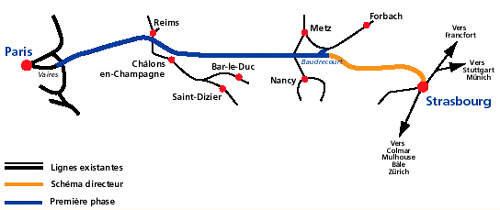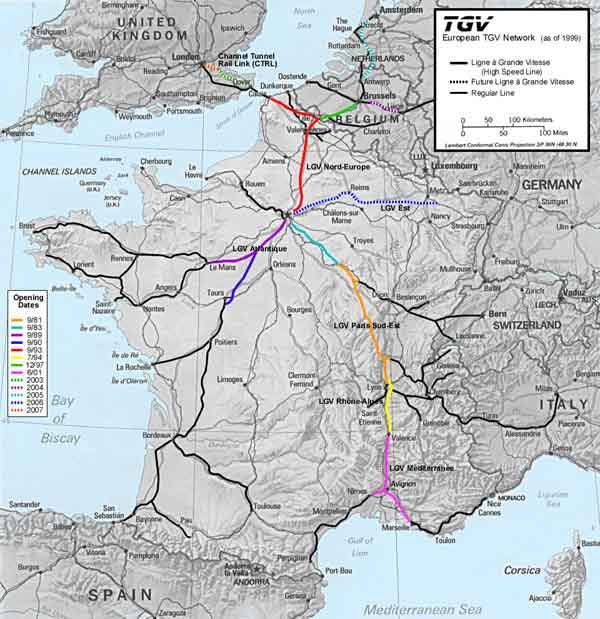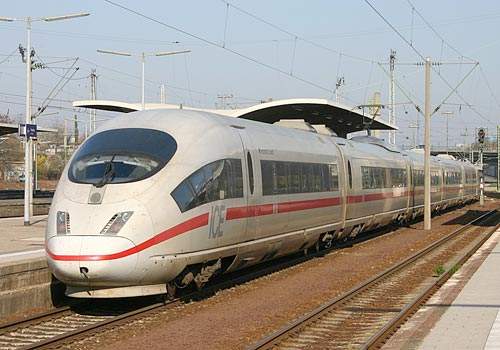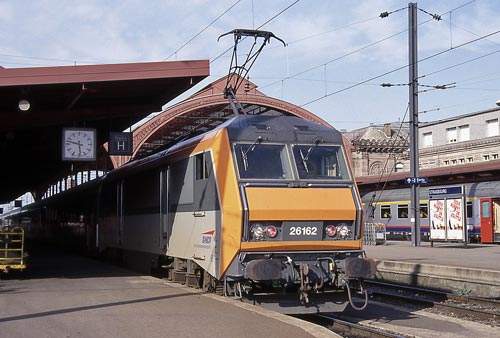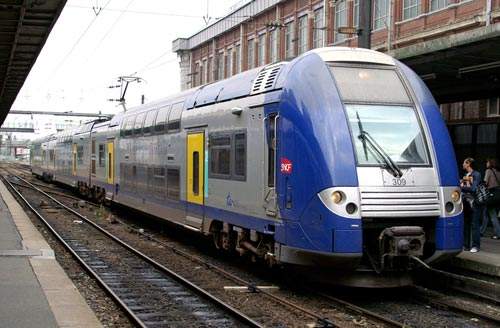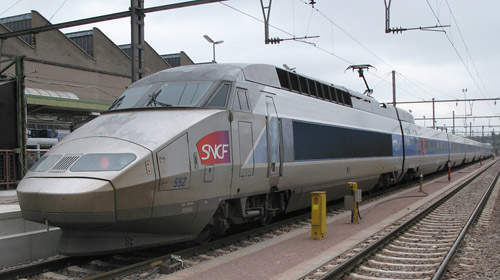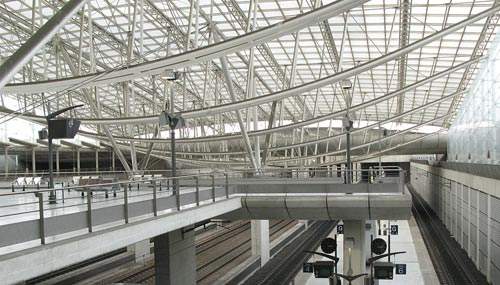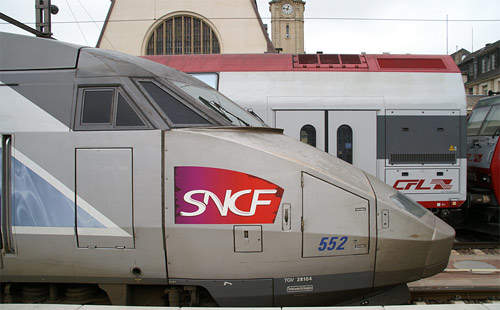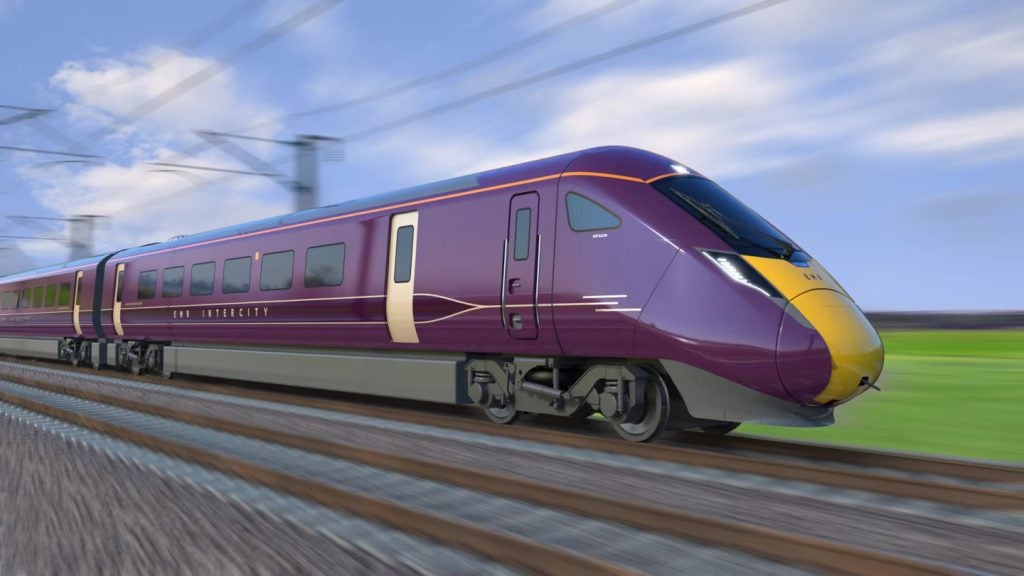Over 20 years in development, the Ligne à Grande Vitesse (LGV) Est project originated in 1985, just five years after France’s first scheduled TGV services began. However, there was uncertainty over the financial case for a route through relatively sparsely populated regions to Strasbourg, with around half a million in the wider urban area.
Reconciling operational differences between the SNCF TGV and DB ICE stock that will both work the route has also added delays. It was to be many years, and after other LGV routes had opened, before eastern France was added to the high-speed network.
The project
Financial contributions have come from the EU and the many national, regional and local authorities anticipating benefits from the project. Several of these, such as the Grand Duchy of Luxembourg, are beyond the LGV alignment.
Funding was agreed in late 2000, with construction beginning in 2002. With its remit as a link to neighbouring countries implicit in the full title, LGV Est Européen opened in June 2007.
From the outset, the TGV format meant that high-speed trains were compatible with existing infrastructure as well as LGV. This feature allowed the project to be split into two phases, yet able to accrue substantial benefits from the first section alone. Paris-Strasbourg TGV through-services run over conventional track for 22.5km from Paris Gare de L’Est to Vaires, where the LGV formation begins.
The 300km (186 mile) high-speed line, constituting the first phase, ends at Baudrecourt, south-east of Metz. The remaining 106km (65.9 miles) to Strasbourg is an upgraded 160km/h-limited conventional track.
It is expected that it will take at least 15 years of operations for LGV Est to repay the investment of €5.5bn. LGV is now perceived as the western end of the ‘European Magistrale’ high-speed line through Europe.
Infrastructure
The new line is 1,435mm twin-track, electrified at 25kV ac and built for a maximum of 350km/h, although trains will run at 320km/h. To provide connections with pre-existing heavy rail lines, including the north-south LGV Jonction Est between Roissy-Charles de Gaulle and Marne-la-Vallée (for Disneyland Paris), an extra 44km of track has been installed.
With passing loops for the platforms plus through tracks, three stations have been built on LGV Est itself. Developed on green field sites, the stations are intended to act as park-and-ride railheads for the surrounding areas.
Champagne-Ardennes is just south of Reims, whose original station, renamed Reims-Centre, also retains direct TGV services from Paris. Gare Meuse is located close to the towns of Bar-le-Duc and Verdun.
The third station, Gare Lorraine, is located at Louvigny.
At this point the LGV viaduct crosses the Moselle valley and the Nancy-Metz main line, thereby offering better connections than the ostensibly temporary Louvigny site. Supporters of the latter claim significance for its proximity to Metz-Nancy-Lorraine Airport and point up the potential waste of this short-lived resource, although there are plans to reconstitute Louvigny for high-speed freight use.
The project includes improvements to infrastructure related to LGV Est operation, notably station improvements at Paris Gare de L’Est and Strasbourg, the cross-border link over the Rhine to Kehl, Germany, and improvements to feeder lines in the Vosges mountain area.
Rolling stock
In addition to existing TGV Réseau sets for domestic services, a pool of 19 Alstom TGV POS (Paris-Ostfrankreich-Süddeutschland / Paris, eastern France, southern Germany) is being created for routes extending beyond France. Formed from eight refitted TGV Réseau single-deck coaches, providing a capacity of 360, and two new three-system power cars, they feature an increased power-to-weight ratio over previous TGV sets.
The 25kV capability is for France and Luxembourg, 15kV (at 75% power) for Germany and Switzerland, with 1.5kV dc for other parts of France. Displaced TGV Réseau power cars are used with new TGV Duplex (double deck) coaches elsewhere in France where passenger levels justify higher capacity. The enlarged Ourcq depot in eastern Paris, now Technicentre Est Européen, maintains the TGV Est Européen fleet.
On 4 April 2007, the specially created V150 set of two POS power cars and three TGV Duplex coaches including two powered bogies (borrowing from the technology for the forthcoming AGV distributed power units) achieved a world rail speed record of 574.8km/h (357.2mph) near Le Chemin on TGV Est.
For the first time on a regular basis, non-French high-speed trains work into Paris. Having taken five years to gain approval for operation in France, specially modified Deutsche Bahn Class 406 ICE3M (Mehrsystem: 4-voltage) operate services to Frankfurt via Saarbrücken, connecting with LGV Est at Baudrecourt. The cost of ICE modification for operation in France has prompted speculation that DB may acquire a small TGV fleet for operating such services.
Signalling and communications
As with other SNCF high-speed lines, LGV Est uses the proven TVM430 cab signalling to control trains, offering both high speeds and short headways between trains. TGV POS sets are fitted for European Rail Traffic Management System (ERTMS) operation. Away from the high-speed lines, TGVs use standard SNCF KVB signalling.
Phase two
From the LGV Est opening, journey times to eastern France and beyond were greatly reduced: Paris Est to Strasbourg in 2h 20min (from 4h); to Nancy and Metz in around 1h 30min (from 2h 45min); and at 45min, Reims has timings similar to some stations in suburban Paris. For international journeys, the benefits of LGV Est are added to by through-working high-speed train sets and the obviated locomotive changes. Paris-Frankfurt journeys go from over 6h 15min to 3h 50min; with Paris-Luxembourg down to 2h 15min and Paris-Zurich to 4h 35min.
Services extending beyond the LGV will expand, with operation of TGV sets to Basel, Zòrich and Mònchen. Although the Paris-Strasbourg service is domestically most identified with TGV Est, it is on services to Switzerland and central/southern Germany that seem most likely to achieve the aim of taking substantial business from the airlines.
LGV Est services were launched at 85% of the projected total, thereby leaving capacity for increase and revision. In the light of loadings being 20% better than anticipated at the outset, and with SNCF fielding criticism of lack of seats at peak hours, amendments may come sooner than later.
An irony of LGV Est is that for several sizeable communities in eastern France, the costly project represents deterioration in services, either through fewer workings or the type of stock used. Regional SNCF TER services mainly fill the gaps and provide feeder services, with a mixture of loco-hauled stock and multiple units deployed.
Forecast to cost around €2.1bn, the LGV Est second stage from Baudrecourt to Vendenheim near Strasbourg will reduce travel time by 30 minutes to 1h 50mins. The project has received a €130m loan from European Investment Bank and is scheduled for completion by 2016.
The second phase engineering is more challenging than the first and will include the line’s major engineering feature, a 4km (2.5 mile) tunnel through the Vosges near Savernes. As part of the onward route improvement, the bridge over the Rhein at Strasbourg’s eastern edge to Kehl in Germany will be rebuilt for two tracks.
Civil works for the project have been divided into lots and awarded to several contractors including Dodin Campenon Bernard, VINCI Construction Terrassement, GTM Alsace and GTM Lorraine. These civil works commenced in 2010.
In October 2011, RFF awarded a €180m design-build contract to Eurovia Travaux Ferroviaries. The contract includes construction of 212km of track between Metz and Strasbourg.
Drilling of the Saverne tunnel as part of the civil works started in October 2011. By June 2012, tunnelling of the north tube of the Saverne tunnel was completed by the tunnel boring machine (TBM) Charlotte. Tunnelling of second tube is scheduled to start in October 2012.
Alstom will supply signalling equipment for the line under a €40m contract.

